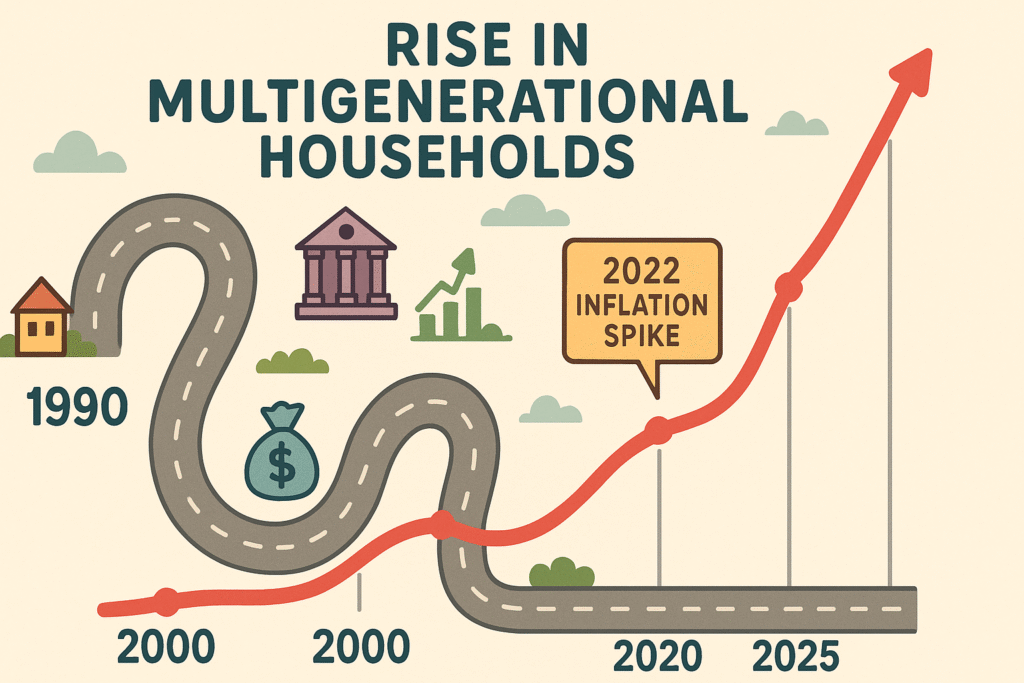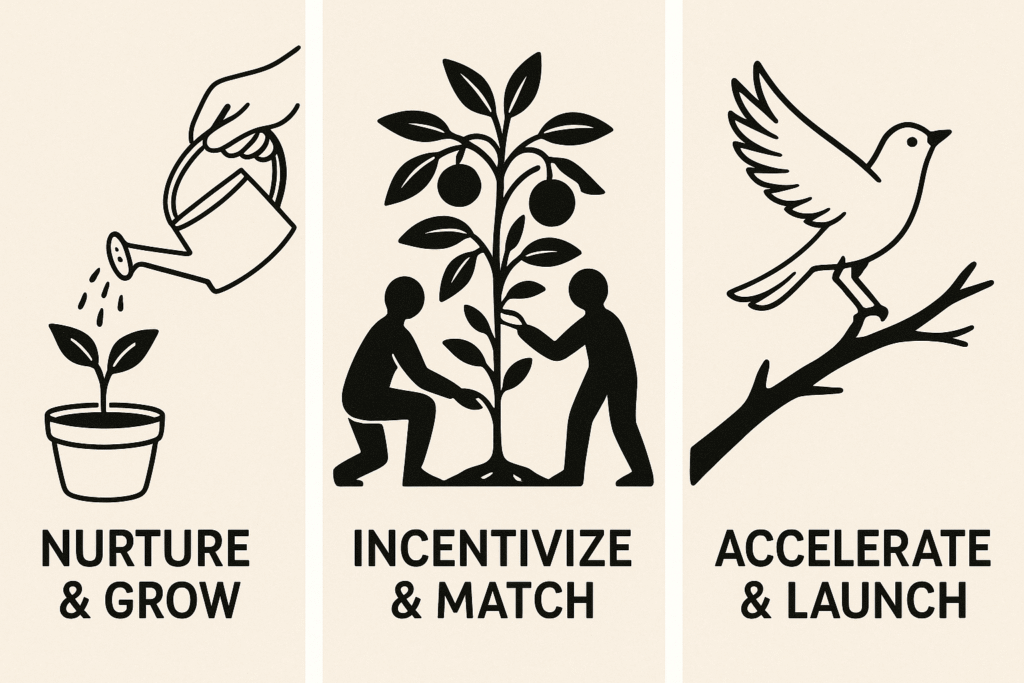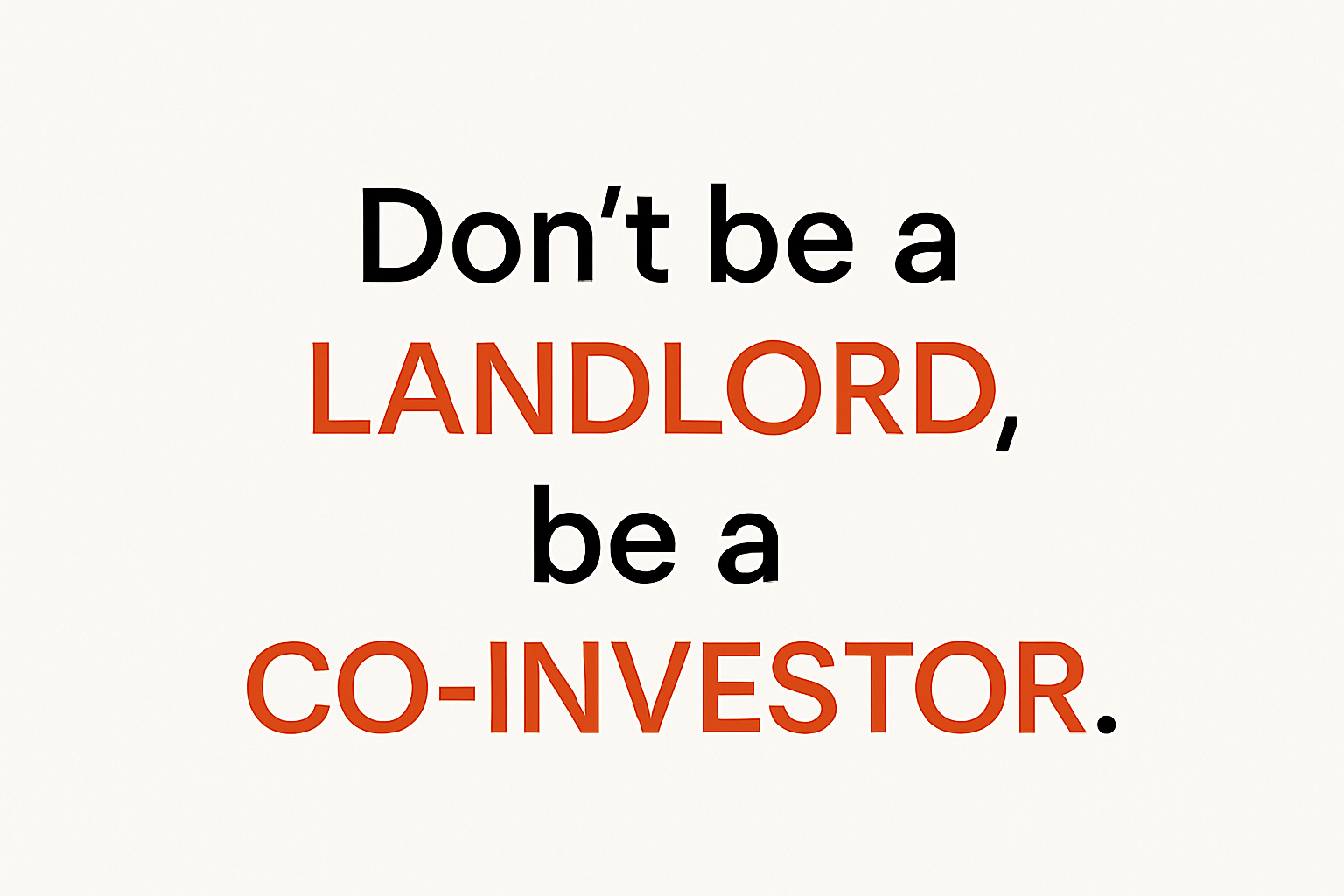Adult Child Living at Home Rent Free: A Financial Planner’s Guide [2025]

Table of Contents

Let’s start with the question that’s likely keeping you up at night: Should you charge your 25-year-old adult child living at home rent free?
The simple answer is yes. But not in the way you think. The goal isn’t to become their landlord; it’s to become the co-investor in their future.
Certified Financial Planners and Family Finance Coaches are helping families navigate this exact situation. I’ll never forget the tension at the dinner table with a client family, the Millers. The parents felt like ATMs, and their smart, employed son felt like a failure for not being able to afford the sky-high rent in their city. That night, the idea for what I now call the “Launchpad Agreement” was born.
This is not about collecting a check. It’s a collaborative framework designed to turn a point of conflict into a powerful plan for their financial independence. Forget the awkwardness and resentment. Let’s reframe this entire situation from a stressful family problem into your child’s single greatest financial head start.
Pew Research Center is a non-partisan “fact tank” and the definitive source for statistics on social trends, including the number of young adults living in multigenerational households. Linking to their research is the best way to substantiate the article’s claim that this is a growing phenomenon.
U.S. Bureau of Labor Statistics (BLS) is a government agency and the primary source for economic data. Linking to the Consumer Price Index (CPI) page provides an unimpeachable source when discussing the impacts of inflation on the cost of living.
When mentioning high housing costs, linking to a major data aggregator like Zillow Research provides real-time, credible data on rental and home prices, reinforcing the economic pressures facing young adults.

The New Normal: Why Is Your Adult Child Living at Home Rent Free?
If it feels like every one of your friends has an adult child back in their old bedroom, you’re not wrong. According to the Pew Research Center, a majority of young adults in the U.S. now live with their parents—the highest share since the Great Depression!
This isn’t a story about lazy, unmotivated kids. It’s a story about economics. In 2025, your child is facing a financial landscape that is fundamentally different from the one you entered. They’re grappling with:
- Crushing Student Loan Debt: Millions are starting their careers with a debt burden equivalent to a mortgage.
- Stagnant Real Wages: While some salaries are up, they often haven’t kept pace with the explosive growth in essential costs.
- An Impossible Housing Market: Record-high home prices and soaring interest rates have put the dream of homeownership out of reach for many.
So, let’s be brutally honest: letting them live at home isn’t just you being nice. For many, it’s an economic necessity. The problem is that an unstructured, rent-free arrangement, while well-intentioned, often enables financial stagnation. Your role isn’t to provide a permanent landing pad; it’s to build them a launchpad.

From ‘Rent’ to ‘Launchpad Contribution’: A Critical Mindset Shift
The single most important change you can make is to banish the word “rent” from these conversations. “Rent” implies a transactional, landlord-tenant relationship. It feels cold and can create resentment on both sides.
Instead, introduce the concept of a “Launchpad Contribution.”
This simple language shift does three powerful things:
- It’s Collaborative: It positions the contribution not as a payment to you, but as an investment in them.
- It’s Goal-Oriented: The money has a specific purpose tied to their future independence (e.g., saving for a down payment, killing off student loans).
- It’s Temporary: It has a built-in understanding that this is a phase with a defined timeline and a successful exit as the goal.
This is the core of the Launchpad Agreement: A formal, written plan that outlines finances, responsibilities, goals, and a timeline, created together.

The 3 Launchpad Agreement Models (Which One Fits Your Family?)
One size does not fit all. The right approach depends on your child’s income, their financial goals, and your own financial situation. Here are the three most successful models I use with my clients.
| Model | The “Nest Egg” Builder 🥚 | The “401-Parent” Match 🤝 | The “Independence Accelerator” 🚀 |
| Who It’s For | Young adults with low to moderate income who need to build initial savings. | Children with steady income who would benefit from an incentive to save aggressively. | High-earning young adults who can afford market rates but want to save rapidly. |
| How It Works | You charge a below-market contribution (e.g., $500/mo). They pay it to you, but you secretly save it for them. You give it back as a lump sum when they move out. | They pay you a set contribution, and you require them to save an additional amount into their own high-yield savings account. You then match a portion of their savings (e.g., 50 cents for every dollar they save). | They pay you a fair market contribution based on local rates. This allows them to experience real-world housing costs while still saving aggressively due to lower food and utility expenses. |
| Primary Goal | Build a down payment or emergency fund without them realizing the full amount. | Teach the habit of saving and the power of a “company match” concept. | Accelerate their exit timeline by simulating real-world costs and maximizing savings. |
Export to Sheets
The Conversation: A Script for Proposing the Agreement
This is the part you’re dreading. But I promise, with the right framing, it can be an incredibly positive conversation. I know because I made a mistake with my own daughter by just handing her a number. It felt transactional, and it taught me that the how of the conversation is more important than the how much.
1. Set the Scene: Schedule a specific time. Don’t just bring it up over dinner. Say, “Hey, I’d love to chat about our financial partnership and your future goals. How about we sit down Saturday morning?”
2. Start with Love and Affirmation:
- “We love having you here. This isn’t about pushing you out. It’s about helping you get to where you want to go, faster.”
- “You’re doing an amazing job, and we’re so proud of you. We want to take the next step in helping you build real financial strength.”
3. Introduce the “Launchpad” Concept:
- “I’ve been thinking, instead of you just living here for free, what if we worked together on a formal plan to launch you into your own place? I’ve heard of this idea called a ‘Launchpad Agreement,’ and I think it could be perfect for us.”
4. Propose a Model and Collaborate:
- “Based on your income and your goal of buying a house, I think the ‘Nest Egg Builder’ model could help you save $12,000 in two years without you even feeling it. What do you think?”
- Listen more than you talk. Ask them about their goals. What do they want? This makes them a partner, not a subordinate.
5. Handle Defensiveness with Empathy:
- If they say, “So you’re just trying to kick me out?”
- You respond, “Not at all. I want you to leave here with a huge financial advantage. This plan is the fastest way I know to get you a down payment for a house you love.”
Implementation Guide: How to Draft Your Launchpad Agreement
A verbal agreement is a future argument. Get it in writing. It doesn’t need to be a complex legal document, but it should be clear. Your agreement, which you can build using our free downloadable template, should cover these key areas:
- ✅ The Financial Contribution: State the exact amount and the due date each month.
- ✅ The Savings Goal: Where does the money go? Specify if it’s going into a dedicated account for them (yours or theirs) and what the ultimate financial target is (e.g., “$15,000 for a down payment”). For accountability, you might ask them to track it with a tool like YNAB or Monarch Money [affiliate link].
- ✅ Household Responsibilities: This isn’t just about money. Outline contributions to chores, groceries, and utilities. This teaches that “rent” is only one piece of the cost of living.
- ✅ Insurance & Liability: A crucial, often-overlooked step. They should be responsible for their own property. An affordable renter’s insurance policy from a provider like Lemonade [affiliate link] is non-negotiable.
- ✅ The Duration & Review Date: No agreement should be indefinite. Set a term (e.g., 12 or 24 months) with a 6-month check-in to review progress and make adjustments.
- ✅ The Exit Plan: What are the conditions for moving out? This isn’t an eviction notice; it’s a celebration plan for when they hit their savings goal.
Ready to build your own agreement? Download our comprehensive, fill-in-the-blank Launchpad Agreement Template. Get the exact clauses and conversation starters you need to make this a success.

Future-Forward Insights: Beyond the Launchpad
By implementing this agreement, you’re doing more than just helping your child save money. You are teaching them invaluable life skills that the real world demands but never explicitly teaches:
- How to budget and automate savings.
- How to negotiate financial terms respectfully.
- How to view housing as a planned expense, not an afterthought.
In the evolving economy of the mid-2020s, intergenerational living is becoming a strategic tool for wealth building. This agreement transforms that tool from a passive benefit into an active strategy. You’re giving them a blueprint for financial discipline that will serve them through their first home purchase, their first market downturn, and beyond.
Your Role is a Launchpad, Not a Landing Pad
Let’s be honest, this process requires patience, love, and firm boundaries. It can be hard. But the alternative—an indefinite, unstructured stay—is a disservice to both of you. It quietly drains your retirement savings and delays their entry into true adulthood.
The Launchpad Agreement transforms you from a passive provider into an active mentor. It’s the ultimate expression of love: preparing your child not for a life of comfort in your home, but for a life of confidence and success in their own.
I’ve seen this framework mend relationships, create six-figure down payments out of thin air, and, most importantly, give young adults the structure and confidence they need to successfully launch.
What is your biggest fear or challenge when it comes to this conversation? Share your thoughts in the comments below—I’d love to help.

Frequently Asked Questions (FAQ)
Q1: Is it legal to charge my adult child rent? Yes, it is perfectly legal. Once your child is a legal adult, you can enter into a rental or living agreement with them just as you would with any other tenant, though our “Launchpad” framework is designed to be more collaborative than a standard lease.
Q2: What if my child can’t afford to pay anything? If they are unemployed or truly unable to contribute financially, the Launchpad Agreement can be modified. Their “contribution” could be non-monetary, such as taking on significant household responsibilities (e.g., all grocery shopping, cooking, yard work) to allow you to save more money or time. The principle of contribution remains, even if the form changes.
Q3: How much rent should I charge my adult child? This is the wrong question. Ask instead, “What contribution amount will help them reach their savings goal within our agreed timeline?” It should be a meaningful amount that requires budgeting but not so high that it prevents them from also having a life and saving independently. A good starting point is often 15-20% of their net income.







